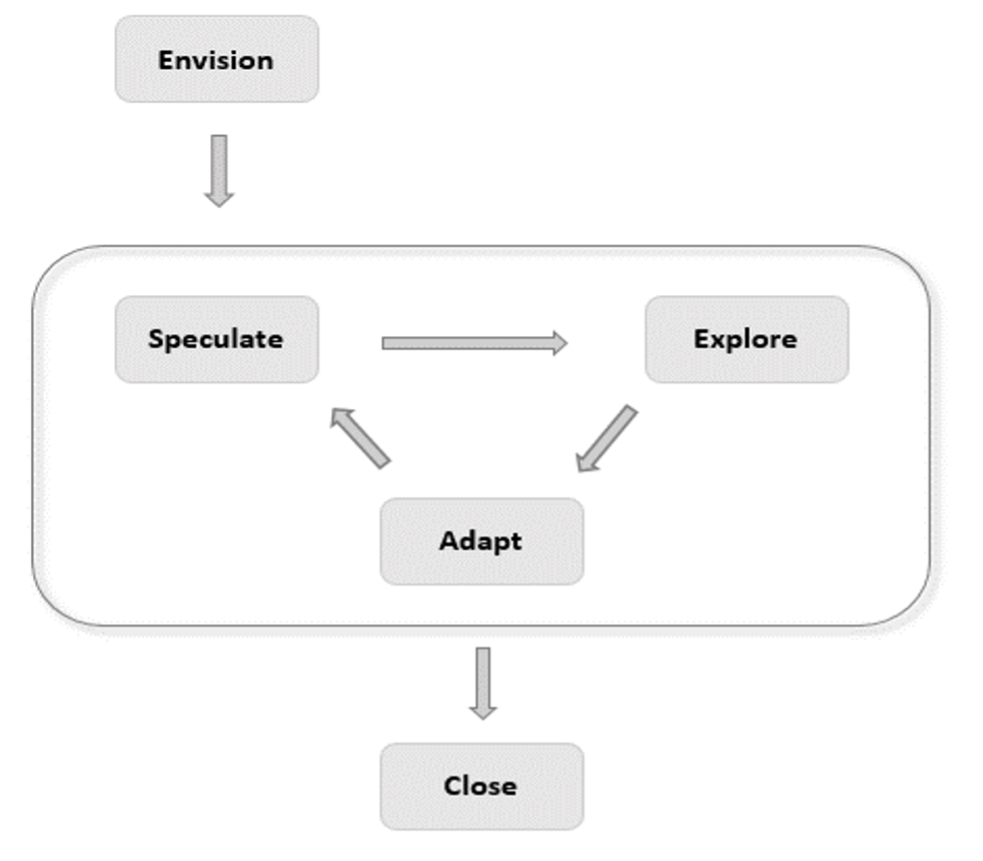The linear workflows used in the construction industry, such as the RIBA plan of work, have a history of starting when the previous phases end. The stages in these workflows are often distinct and sequential, and it might be difficult or expensive to go back after a stage is finished. Design reviews are required in this method, which is also known as the “Waterfall,” and they must be completed before moving on to the next level.
Cross-phase iterations are a rare symptom of problems, and the majority of design specifications will be locked early to prevent rework. Additionally, common planning and scheduling methods for the construction industry, like the Critical Path Method (CPM) and Program Evaluation and Review Technique (PERT), lack the ability to represent feedback and iteration in projects because they only permit one-way progression.
As a result, these processes have come under fire for being a linear paradigm that encourages a fragmented approach to project management, and the need for a more iterative procedure has increased.
To learn more about Agile project management in construction, please refer to the chapter “Nonlinear Project Management: Agile, Scrum and Kanban for the Construction Industry” by the author, as part of a Springer book Industry 4.0 for the Built Environment, edited by Marzia Bolpagni, Rui Gavina, and Diogo Rodrigo Ribeiro.
The roots of Agile project management
The Agile project management idea can be traced back to the “Toyota Way” however, it wasn’t until 1995, when Jeff Sutherland and Ken Schwaber discussed the first Agile technique for software development, that the Agile concept started to catch on. The Agile Manifesto was later written by 17 software developers who met in Utah in 2001.
“We are uncovering better ways of developing software by doing it and helping others do it. Through this work we have come to value:
- Individuals and interactions over processes and tools
- Working software over comprehensive documentation
- Customer collaboration over contract negotiation
- Responding to change over following a plan”
The Agile framework
Twelve Agile principles were developed as a result of this manifesto, including customer satisfaction, welcoming changes, frequent delivery of the product, face-to-face communication, and regular feedback. The below picture shows a generic Agile framework.

This framework has five phases, each with supporting practices:
- Envision: to determine project objectives and constraints
- Speculate: to develop a feature-based release plan.
- Explore: to run and test features in a short iteration.
- Adapt: to review the delivered results and adapt as necessary.
- Close: to conclude the project and review key learning.
Agile methods
The ability to manage shifting priorities, project visibility, business alignment, delivery speed, higher team productivity, improved customer satisfaction, and project risk reduction was found to be the most important benefits of implementing the Agile methodology. In recent years, various Agile methods like Scrum and Kanban have been developed.


Scrum is an Agile framework for planning, monitoring, and completing complex projects. It is a lightweight process that helps teams deliver high-quality products frequently. Scrum is built on the three pillars of Transparency, Inspection, and Adaptation and is an iterative and incremental method for controlling risk and optimising predictability.
The Scrum process consists of a series of iterations called sprints, which are typically one to four weeks long. During each sprint, a group of tasks known as user stories are defined and given priority by the team, which are then completed during the sprint. At the end of each sprint, the team discusses what went well and what may be improved in the upcoming sprint. This process helps teams to swiftly detect and address issues and to ensure that the finished product satisfies consumer demands. The members of the team should regularly review the procedure and assess their progress toward the sprint targets, and if they discover a deviation from the intended result, they should make the necessary adjustments.
Applying Agile to the construction sector
It has been argued that since construction projects are sequential and adjustments are costly as projects advance, they are not a viable choice for an iterative method. However, buildings are becoming more complex than ever, and a framework that encourages more frequent feedback can reduce the risk immensely. Furthermore, adopting an iterative process on a traditional 2D workflow can be challenging, but Building Information Modelling (BIM) has provided opportunities to adopt a non-linear method.
BIM and agile management both share similar characteristics, and they make similar promises. Building information modelling can therefore play a significant role in the adoption of agile management, not only by providing the technological infrastructure for the model(s) and information to be shared among team members but also because it is a methodology with similar objectives.
The construction industry has adapted tools and methods from other sectors, such as the lean manufacturing model. Although there aren’t many instances of Agile management being used in the construction sector, practices have started implementing some aspects of this method in their practice. Agile project management has been receiving some attention recently from both practitioners and researchers, and BIM can help the building industry to adopt this methodology.
About the author


Mohammad Saki is the programme leader for MSc Sustainable Building Design and Engineering at the University of Greenwich. Motivated by his background in both Architecture and Project Management, he is teaching and researching multidisciplinary areas related to digital transformation from multiple perspectives, including technology, process, and sustainability perspectives.
Across these areas, he researches Building Information Modelling; Virtual and Augmented Reality; the Internet of Things; innovative management approaches, specifically non-linear methods such as agile management; and the impact of digitalisation of the built environment on sustainability, including performance simulation and life cycle analysis.
View the original article and our Inspiration here


Leave a Reply